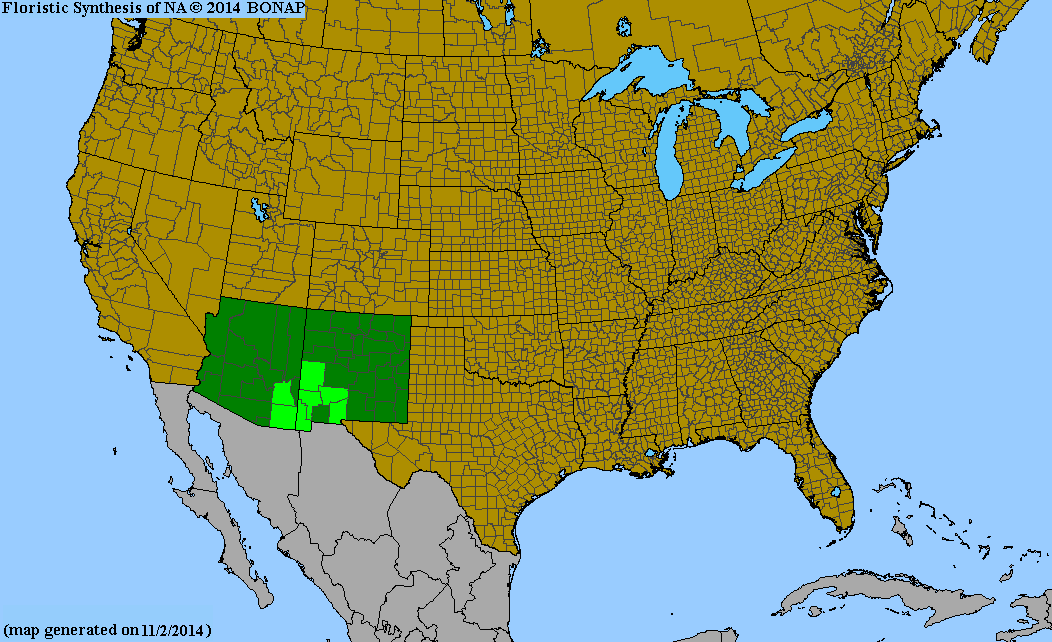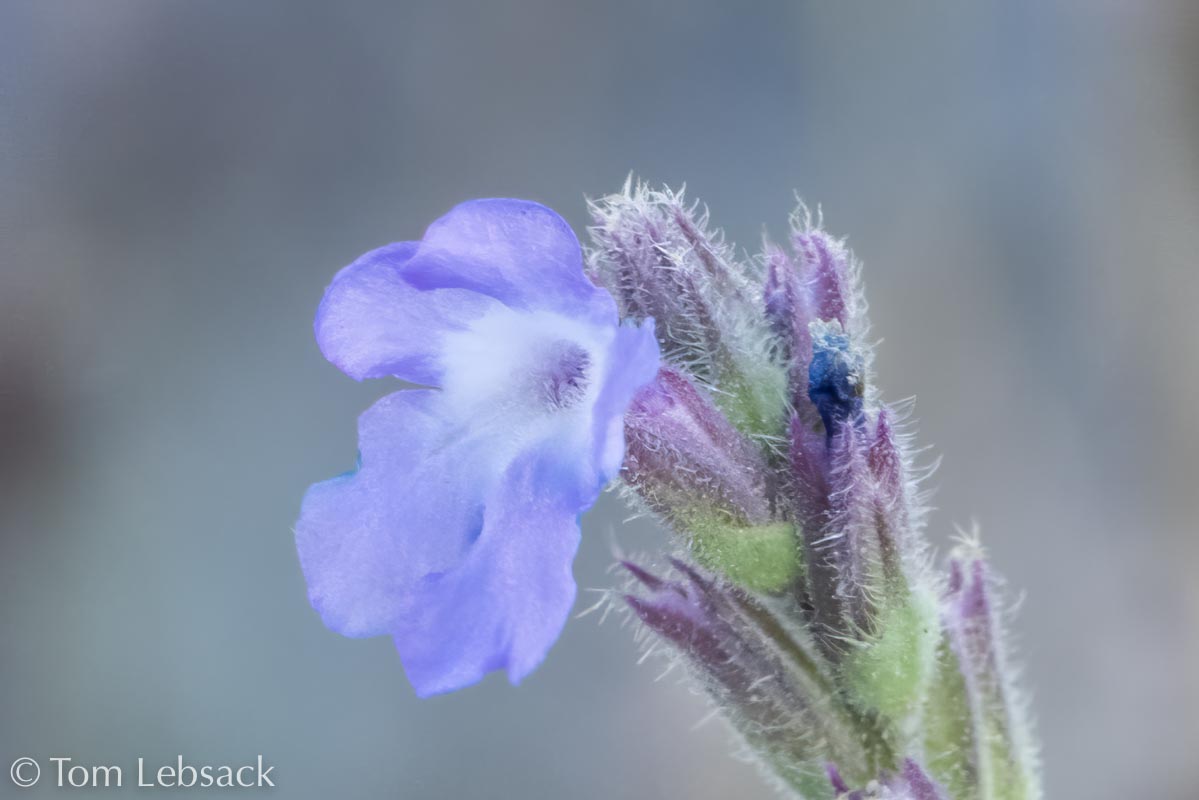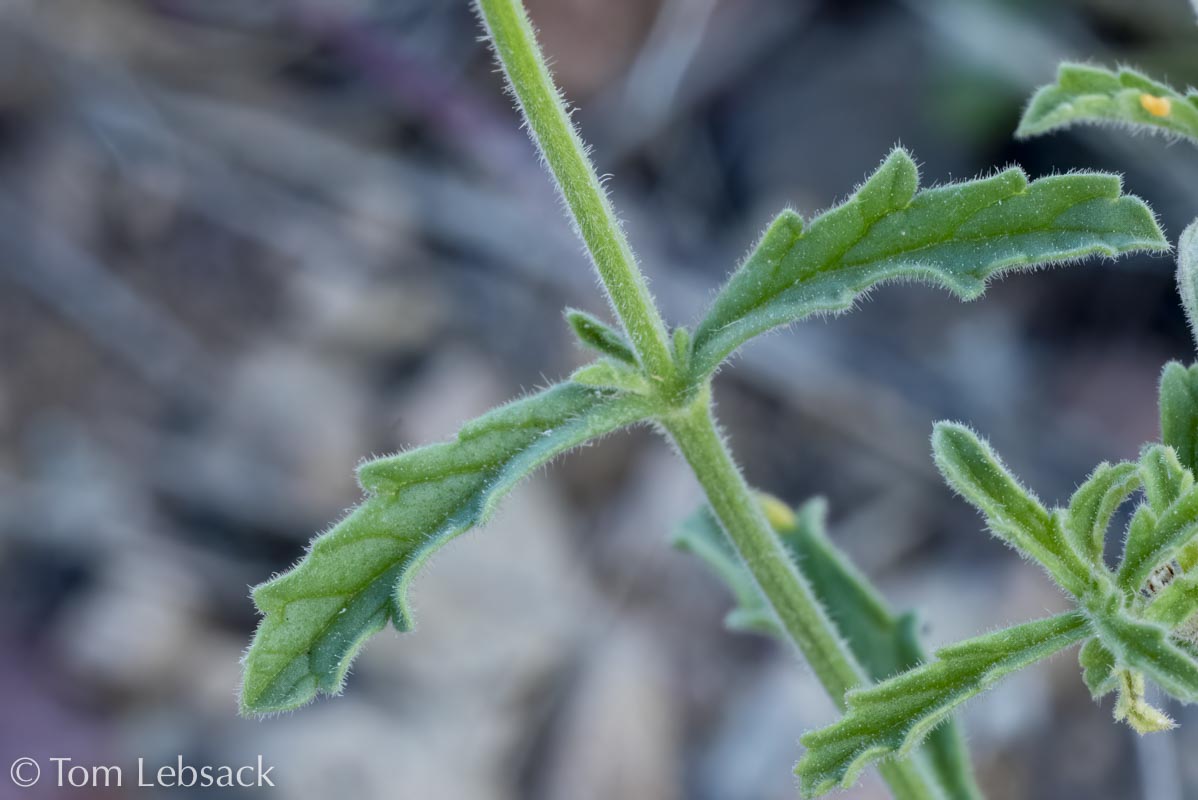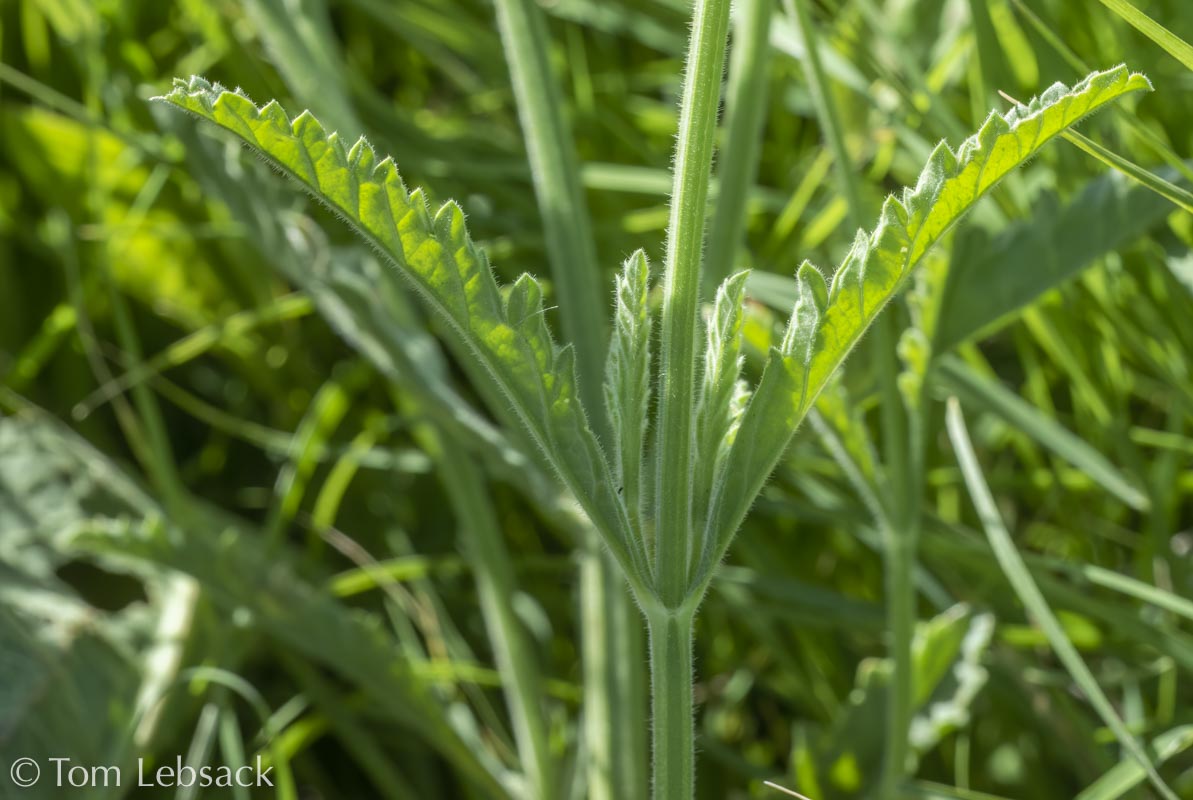Texas Wildbuds
Verbena neomexicana var. hirtella
(New Mexico Verbena)
| Scientific Name | Verbena neomexicana var. hirtella | USDA PLANTS Symbol | VENEH |
| Common Name | Hillside Vervain, New Mexico Verbena | ITIS Taxonomic Serial No. | 530782 |
| Family | Verbenaceae (Verbena) | SEINet Reference |
Click Here |
| Description |
Habitat: Desert scrub, dry washes, plains, foothills and canyons, 2000 to 6000 ft. Plant: Slender, erect perennial, 12 to 28 inches tall, single or a few hairy stems branched from base and above. Leaves: Opposite, narrowly ovate in outline and shallowly incised, 3/4 to 2 inches long, sessile or nearly so, hairy surfaces and somewhat glandular; lower leaves withering early. Inflorescence: Small, violet flowers in 1 to 3 slender elongated spikes per stem; each flower subtended by a small ovate-triangular bract, shorter than the calyx; 5-toothed calyx 1/8 to 3/16-inch long; blue to violet, rarely white, tubular corolla with 5 united flaring petals (salverform), tube slightly longer than the calyx. Bloom Period April to November. References: "Manual of the Vascular Plants of Texas" by Correll and Johnston, SEINet, iNaturalist, Southeast Arizona Wildflowers and Plants. Note: V. neomexicana is not shown in the Big Bend area according to the BONAP map on the right; however it appears in the SEINet Big Bend Checklist and on iNaturalist. It is possible that the images here are actually V. perennis or V. canescens; however, there are differences in leaf shape, hairiness, and bracts with these images being more like V. neomexicana in these respects. |
BONAP Distribution Map Map Color Key Map Color Key |
Texas Status: Native |
Banner photo of Castilleja indivisa and Lupinus ssp. taken along FM 1323 north of Johnson City, Blanco County
© Tom Lebsack 2025
Every attempt is made to provide accurate, up-to-date, and relevant information, but the completeness or accuracy of any information presented on this website cannot be guaranteed. I use authoritative references to insure high standards of accuracy and review and update the information frequently.






